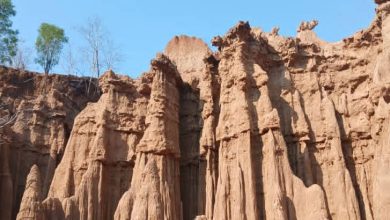Chakwera to commission Kayelekera mine today
President Lazarus Chakwera is today expected to officially commission operations at Kayelekera Uranium Mine (KUM) in Karonga that could help boost Malawi’s economy.
The commissioning follows approval and issuance of the environmental and social impact assessment (Esia) certificate by the Malawi Environment Protection Authority (Mepa).

The certificate, according to a note from Lotus Resources Limited, managers of the mine, is a “notice of approval to proceed with the project”.
In a statement, Lotus managing director Greg Bittar described the formal and final approval to proceed with production as a terrific milestone.
He said: “Once again, we thank Mepa and, more broadly, the Government of Malawi for the collaborative approach and strong ongoing support for the restart of the Kayelekera Uranium Mine.
“We will continue to work closely with Mepa and all stakeholders to ensure Kayelekera’s safe and secure operation in accordance with the obligations under the Esia certificate and in the best interests of our onsite team, the local communities and the environment.”
Besides the 15 percent stake, Lotus will be paying 30 percent in corporate tax to the Malawi government, a royalty of five percent of the gross revenue at minegate, resource rent tax and other indirect taxes through employment as per the mining development agreement (MDA).
The company also plans to recruit about 600 people, 90 percent of them Malawians.
Lotus also signed a community development agreement (CDA) where, as per Section 164 of the Mines and Minerals Act (MMA 2023), it will be providing 0.45 percent of its annual gross sales to the community.
Earlier, Malawi University of Business and Applied Sciences associate professor of environmental health Save Kumwenda said while there is a good regulatory framework, Mepa lacks capacity to monitor compliance.
Ahead of the restart, Lotus Resources has signed several off-take agreements, including a four-year binding contract in March 2025 for the sale and purchase of 600 000 pounds (about 272 000 kilogrammes) of Kayelekera uranium with an American power utility company.
Kayelekera is one of the three mining projects that are expected to roll out in 2025. The others are the Kanyika Niobium Mine in Mzimba and the Kangankunde Rare Earth Project in Balaka.
Mining, alongside agriculture, tourism and manufacturing are touted as key drivers to spur Malawi’s economic growth under the ATM+M strategy.





